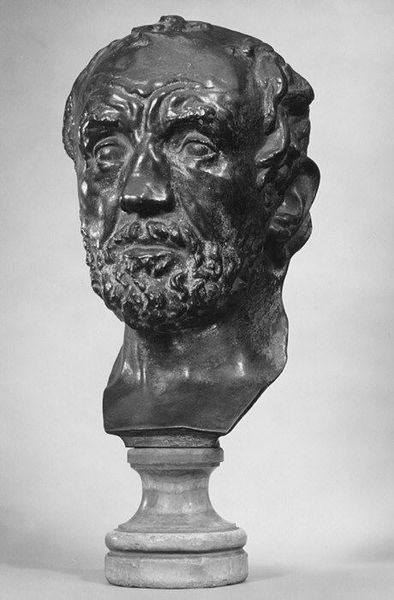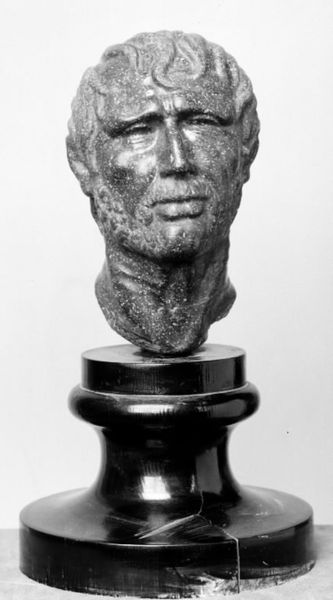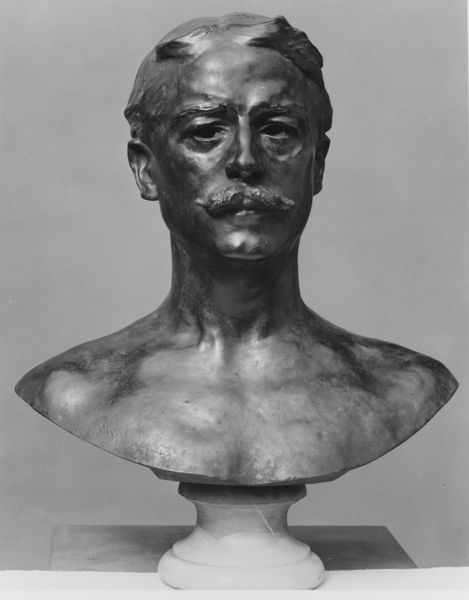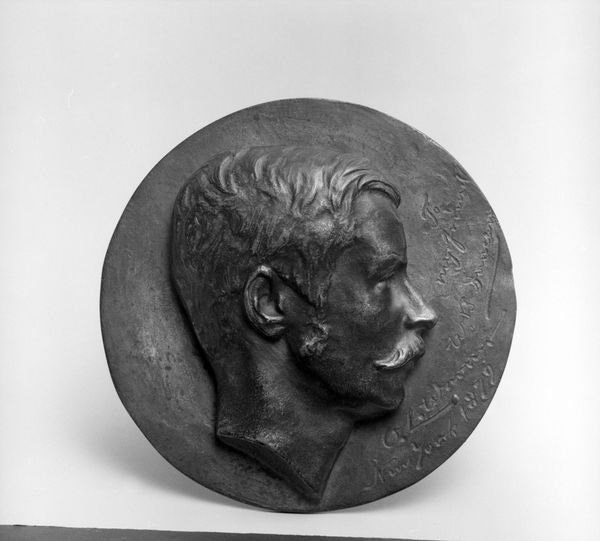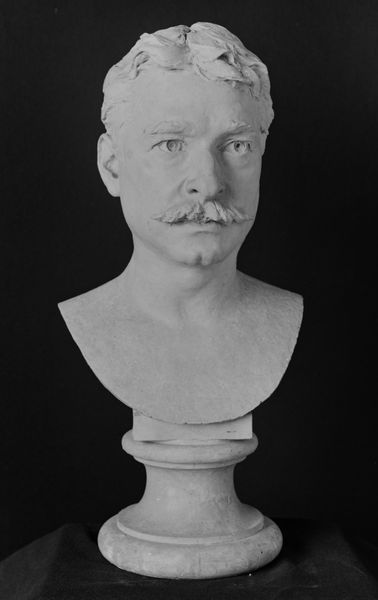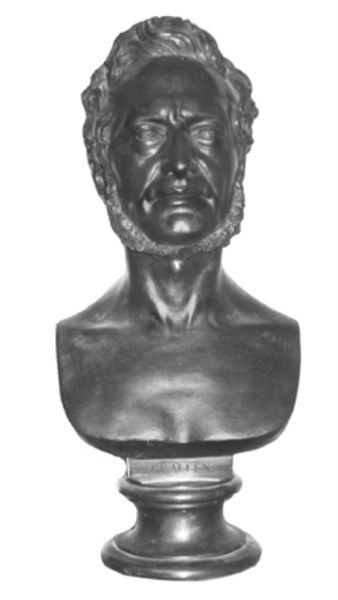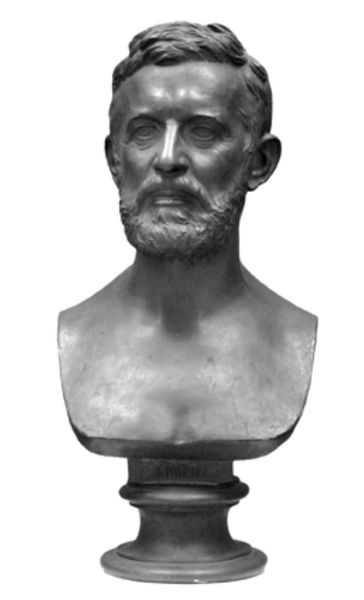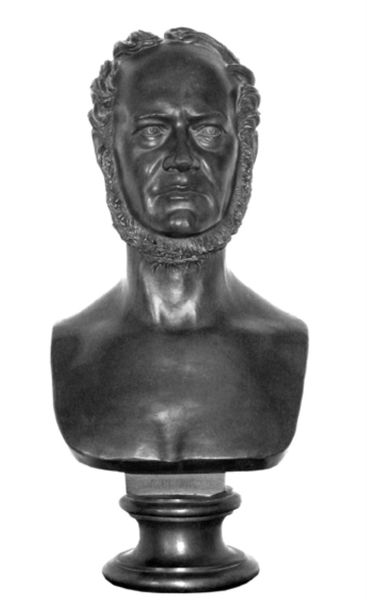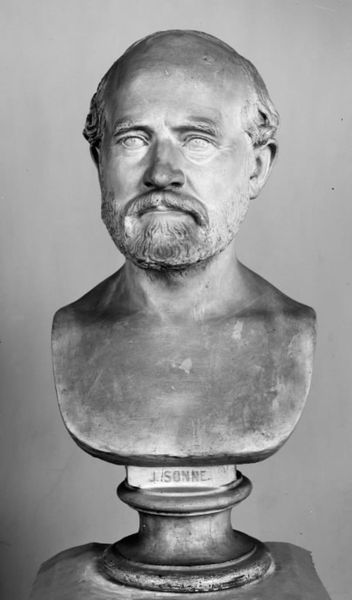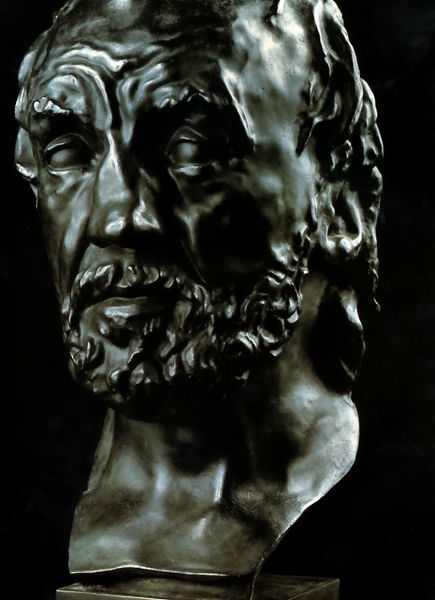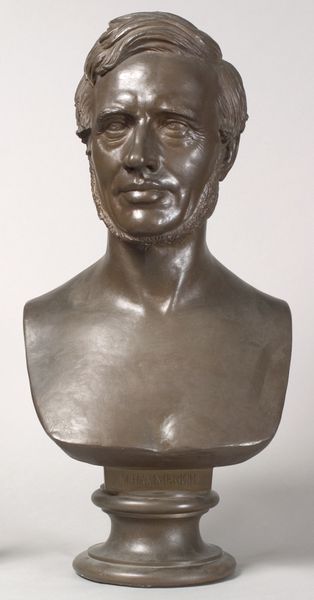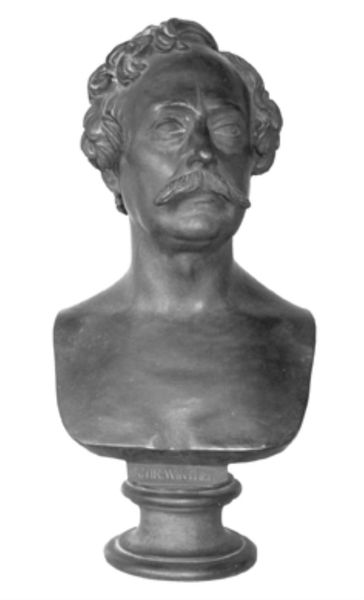
bronze, sculpture
#
portrait
#
sculpture
#
classical-realism
#
bronze
#
figuration
#
sculpture
#
academic-art
#
decorative-art
Dimensions: Height: 15 1/2 in. (39.4 cm)
Copyright: Public Domain
Curator: Paul Dubois's bronze sculpture, "Louis Pasteur," created in 1889, resides here at The Met. What are your initial impressions? Editor: Well, its monochrome tonality certainly projects a sense of solemnity and gravitas. It's quite severe, wouldn't you say? A bust capturing not just likeness but also an imposing intellectual presence. Curator: Indeed. The artist employs a highly detailed and realistic approach. Notice the meticulous rendering of Pasteur’s facial features – the deep-set eyes, the lines etched onto his forehead. It's a remarkable example of academic realism. The use of bronze also lends it a certain weight, both literally and figuratively. Editor: And that weight is also contextual, isn’t it? We see this man represented in bronze at the height of both the Second Industrial Revolution and what some scholars term The Second Scientific Revolution. Pasteur wasn’t merely a scientist; he epitomized scientific authority at a moment of unprecedented transformation in medical and social norms. Curator: Absolutely. The formal choices Dubois makes—the medium, the realistic style—underscore the sitter’s status and legacy. I find the detailing and texturing around the hair particularly interesting. It contrasts slightly with the smoothness of the face, drawing the eye. Editor: I agree. Consider how portraiture was being redefined at the time—think of Degas and Cassatt. This is academic, yes, but also indicative of a specific desire to memorialize public figures. What social function does it serve, and for whom? Was it intended to inspire—to instill a sense of scientific hope, progress? Curator: Undoubtedly. Its realism speaks to the core tenets of positivism and enlightenment that were important during the 19th century, but it also underscores his contribution to scientific progress during this era. Dubois certainly elevated Pasteur beyond just a portrait, rendering him nearly a cultural monument in bronze. Editor: So true, and how we interpret those monuments shapes our own contemporary moment. Looking closely at works like this compels us to examine the values and power structures of that historical period, prompting a vital re-evaluation in light of present-day conversations. Curator: A vital reflection, indeed. Editor: Very much so.
Comments
No comments
Be the first to comment and join the conversation on the ultimate creative platform.
